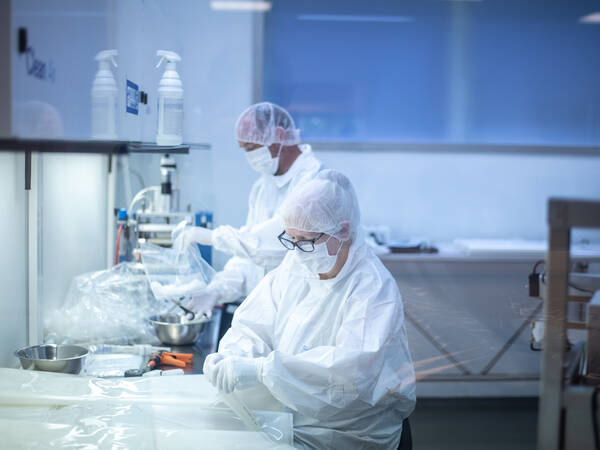

In pharmaceutical processes, precious biological compounds are cultured and pumped from one place to another through a series of columns, filters and other devices. This to produce an ultrapure and safe medicine that can go straight into the patient. With that in mind, it is no surprise that the regulations for producing such solutions are extremely strict. Leaks or other malfunctions may lead to precious and expensive product being spilled and dangerous situations for those coming into contact with it. To prevent these risks and ensure safe fluid transfer, secure and leak-free connections in all production steps are essential.
But how can you ensure that the connections in your process are secure and leak-free? To make sure your connection is strong enough to withstand the desired pressure on it, there are five ways of securing your connection.
Tie-wraps
The first option to locally strengthen the connection is the good old tie-wrap. This plastic cable binder is an easy and cheap solution to put over a barbed fitting inside a tubing to secure the connection. It is available in multiple colors, which allows for labelling of different streams with separate colors to distinguish them. These binders can be used either single or in duo, for even more reinforcement, and are very reliable if they are assembled the right way. For double tie-wraps, this means orientating the closure opposite to each other, because at the closure there is a
little gap in the compression. Single or double tie-wraps are
the go-to option for standard pressure applications.
Pharma+ tubing retainers
These blue tie-wrap like retainers are an advancement in securing connections. They feature a revolutionary lead-in ramp creating a complete 360° compression around the tubing, ensuring a tight ant secure fit over the hose barb. This uniform compression minimizes any gaps or weak points, while ribs on both edges provide an extra layer of protection. Moreover, these retainers are clean room produced to prevent contamination and the materials meet USP Class VI and ISO 10993 criteria. They are therefore eminently suitable to replace single or double tie-wraps in standard pressure applications, as the Parma+ retainers eliminate the gap at the closure that these binders have.
BarbLock® tubing retainers
These ultra-secure tubing retainers also give a full 360° radial crimp behind the barb, directly on the barb’s ridge. BarbLocks® are compatible with a wide range of different fittings without any adhesives. Therefore, they are a great option for demanding fluid transfer applications including systems that handle sensitive liquids and gases. These retainers are made from high-performance polypropylene (PP) and polyvinylidene fluoride (PVDF) resins that are compliant with USP Class VI requirements and gamma stable.
Stainless steel clamps
There is a wide range of sizes and variants of these stainless steel clamps that again give a 360° uniform compression around the whole circumference of the clamp. The most used variant in pharmaceutical processes are ear clamps, with a clamp ear on top of the ring that can be closed with a specific tool. When this is closed, a visible deformation provides evidence of proper closure. They are ideal for critical applications like around filters to ensure a robust and leak-free connection.
Overmolding
With this technique, two pieces are molded together in such a way that they can no longer be distinguished from each other. This results in a very strong and therefore more durable connection eliminating any ridges or gaps that could lead to leakages or breaks. Moreover, such a connection creates a seamless flowpath that also reduces the risk of entrapment of cells or damage of other vulnerable biological compounds. It is therefore considered the best option for the production process of for instance
cell and gene therapies and other demanding processes
such as fill and finish applications.
In conclusion, overmolding is seen as the best way to ensure a secure and leak-proof pharmaceutical process. However, the best way to strengthen your connection depends on your specific application. We also talked about this in the webinar about prevent leakage in (bio)pharmaceutical processes. Do you need more information about securing specific connections in your production process? Feel free to contact me using the details below.